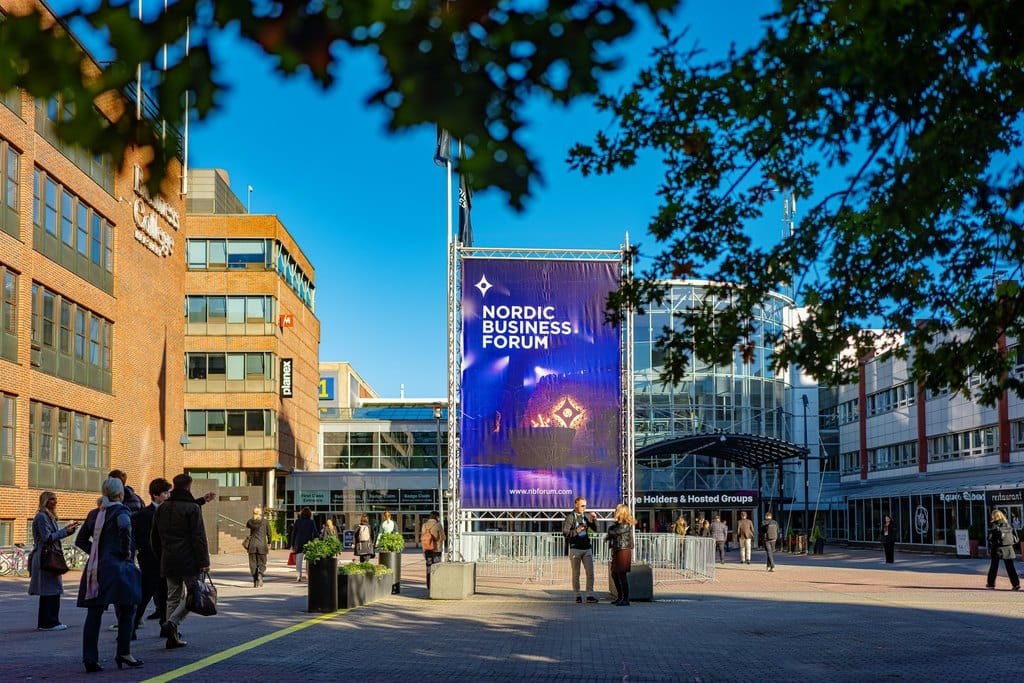By Dr. Demetris Kamaras*
The generational gap problem is not new; actually, it is very old. Differences between generations, especially in terms of mentality, ways of communication and eagerness for change and innovation have always created tensions between parents and children as well as seasoned executives and young employees.
In families and the workplace, young people find themselves between old rules and new opportunities, between rigid authoritative structures and new age mindset. This is frustrating for everyone.
Especially in the corporate world, rapidly developing technology, and software innovations are changing life in the workplace and the way we view employment at large. They change traditional preconceptions about working routines and practices as well as generic concepts such as task management, productivity, and the well-being of employees.
Old, authoritatively strict leadership styles are no longer relevant. Leaders need to reinvent themselves and acquire or explore key qualities, such as active listening, empathy, compassion and above all an appetite for meaningful communication.
At the same time, true leadership needs to explore ways that better serve new generations that are trying to find their way in a world designed to accommodate priorities set many decades ago. For instance, according to a Harvard Business Review article, flexible work is one of the ways a company could help employees of all ages, including “remote or hybrid work, a shortened work week, and variable schedules to meet personal or family needs or accommodate mobility challenges.”[1]
Workplace relationships
Numerous research publications have shown that work ethics (long hours and in-person presence vs flexibility and work-life balance), leadership (rigid and ‘stiff’ hierarchies that rely on power vs more collaborative, flat structures and greater autonomy), technology (older generations feel overwhelmed trying to upskill keeping up with rapid changes) and communication (differences in styles and techniques erode trust and create misunderstandings) are the main reasons for generational gaps in the workplace.
Megan Gerhardt, Professor of Management, Farmer School of Business (Miami U), in an article with ‘The Conversation’ writes that positive workplace relationships are beneficial to teamwork, career development and building a sense of community, making life at work more meaningful. “However,” she adds, “these friendships rarely cross generational lines.”
Today (in the US) there are five generations in the workplace, more than any other time in history. As Gerhardt notes, this increase in diversity is primarily due to older workers remaining in the workforce longer than in the past, whether because of economic necessity or increased longevity and health.[2]
According to US government statistics, in 2024, 18% of the U.S. workforce belonged to Gen Z (born 1997-2012), 15% were baby boomers (1946-1964), 31% were Gen X (1965-1980). The largest group are millennials(Gen Y), born 1981-1996, who represent 36% of workers. Finally, 1% of the workforce belong to the Silent Generation, born 1928-1945.[3]
In a typical organisational chart, Gen Xs hold upper-level management positions with Millennials following closely in the hierarchy. These two have experienced the transforming powers of the digital revolution starting from the advent of the email (GenXs), moved through the proliferation of online content and later, explosion of digital devices and platforms (GenYs) while both have experienced the deconstructing effect of the explosion of social media.
The GenZs
In most countries (depending on the level of digital maturity), Gen Zs were born having screens available from an early age and the flow of social media rolling before their baby eyes. The repercussions are already a field of research in psychology and behavioural sciences, whereas in the workplace the generational gap has suddenly widened affecting all forms of communication and collaboration between young employees and their supervisors.
“Different communication styles and workplace expectations among generations pose a growing challenge for employers, with the issue being cited as the biggest problem facing multigenerational workforces,” PeopleManagement, an influential magazine in the UK’s HRM market and academia has argued.[4]
Elisabeth Kelan, professor of leadership and organisation at King’s College London, told People Managementthat Gen Z’s communication habits are shaped by social media. “This is often framed as Gen Z lacking communicating skills but really, they just prefer different ways of communicating,” she said, explaining that this generation are often more comfortable sending an instant message than picking up the phone.
A Resume Genius[5] research in the US asked 625 hiring managers which generation is the most challenging to work with; 45% pointed to Gen Z, the generation born between 1997 and 2012.
Gen X & Y managers typically complain about Gen Z’s ability to understand, accept, and endorse supervisors’ orders according to a Forbes article, which cited research and examples from various industries. Astonishingly so, half of Gen Z hiring managers themselves admitted that their own generation is the most difficult to manage. [6] This is a clear indication of the extremely rapid pace of change that occurs in the digital age that creates disparities even amongst people in the same generation.
What most of us seem to neglect is that the characteristics of Gen Zs are predominantly the result of Gen-X parenting. Therefore, reaping what they sow, Gen X leaders and managers need to put the extra effort to align Gen Zs to corporate strategies.
At the same time, Gen Zs need to have the patience to deal with the seasoned executives who have a difficulty adapting to the new age and most importantly, they are living for too long in a survival mode.
Gen Zs “bring a unique blend of talent and bold ideas that can rejuvenate any workforce,” wrote Geoffrey Scott, senior hiring manager at Resume Genius. Also, “Gen Z employees tend to put their social beliefs front and center when choosing a workplace, with half saying they would turn down a job that doesn’t align with their beliefs.”[7]
Gaps in communication
An interesting finding by recruitment firm Robert Walters in the UK reveals significant gaps in communication between managers and younger employees. As argued, “a third of Gen Z use AI tools for work-related questions before asking their manager or colleagues… This increased use of AI to resolve workplace issues has meant 39 per cent of UK professionals are asking their line manager fewer questions,” the research noted.[8]
Supervisors’ being ‘cancelled’ by AI suggests a next-level situation that lies beyond the generational problems commonly met in the workplace. When young people turn to ChatGPT for answers that supervisors are unable to properly articulate or plainly unwilling to provide, then interpersonal trust is eroded and the whole corporate hierarchy is undermined. With the rapid advent of AI, things will only deteriorate at a ‘human level’.
It is the experienced leaders’ responsibility to bridge the gap, deploying true leadership traits such as active listening, honesty, empathy, agility, and other characteristics that will make them lead effectively across generations, walking across age boundaries in a meaningful way that would benefit leaders, followers, and organisational goals alike.
Photo: pexels.com
* Dr. Demetris Kamaras is Associate Faculty member of the Communication Department, ACG Deree, Athens (PhD Journalism, MA Communications Policy, BA Economics).
[1] See Harvard Business Review, ‘Bridging Generational Divides in Your Workplace’, by Debra Sabatini Hennelly & Bradley Schurman. January 5, 2023. Available at: https://hbr.org/2023/01/bridging-generational-divides-in-your-workplace
[2] Gerhardt, M. ‘The solution to workplace isolation might be in the gap − the generation gap’. The Conversation, March 25, 2025. Available: https://theconversation.com/the-solution-to-workplace-isolation-might-be-in-the-gap-the-generation-gap-250571
[3] Kyle DeMaria (ed.), Ian Page, Kevin Reuss, and Zoë Zemper, “Changes in the U.S. Labor Supply,” Trendlines, U.S. Department of Labor Employment and Training Administration, August 2024, https://www.dol.gov/sites/dolgov/files/ETA/opder/DASP/Trendlines/posts/2024_08/Trendlines_August_2024.html
[4] People Management, ‘Communication styles voted top problem for multigenerational workforces’, by F. Clemo. September 12, 2025. Available at: https://www.peoplemanagement.co.uk/article/1932226/communication-styles-voted-top-problem-multigenerational-workforces
[5] See Resume Genius ‘2024 Hiring Trends Survey: What makes a great job candidate?’ Written by Eva Chan. June 13, 2024. Available at: https://resumegenius.com/blog/job-hunting/hiring-trends-survey
[6] Royle, O.R. ‘Gen Z really are the hardest to work with…’ Fortune. January 22, 2025. Available at: https://fortune.com/article/how-to-work-with-gen-z-vs-millennials-work-ethic-employees-workplace-recent-grads/
[7] Royle, O.R., 2025 op. cit.
[8] People Management, ‘Gen Z turns to AI before managers to answer workplace questions, survey finds’, by F. Clemo. September 10, 2025 Available at: https://www.peoplemanagement.co.uk/article/1931905/gen-z-turns-ai-managers-answer-workplace-questions-survey-finds


